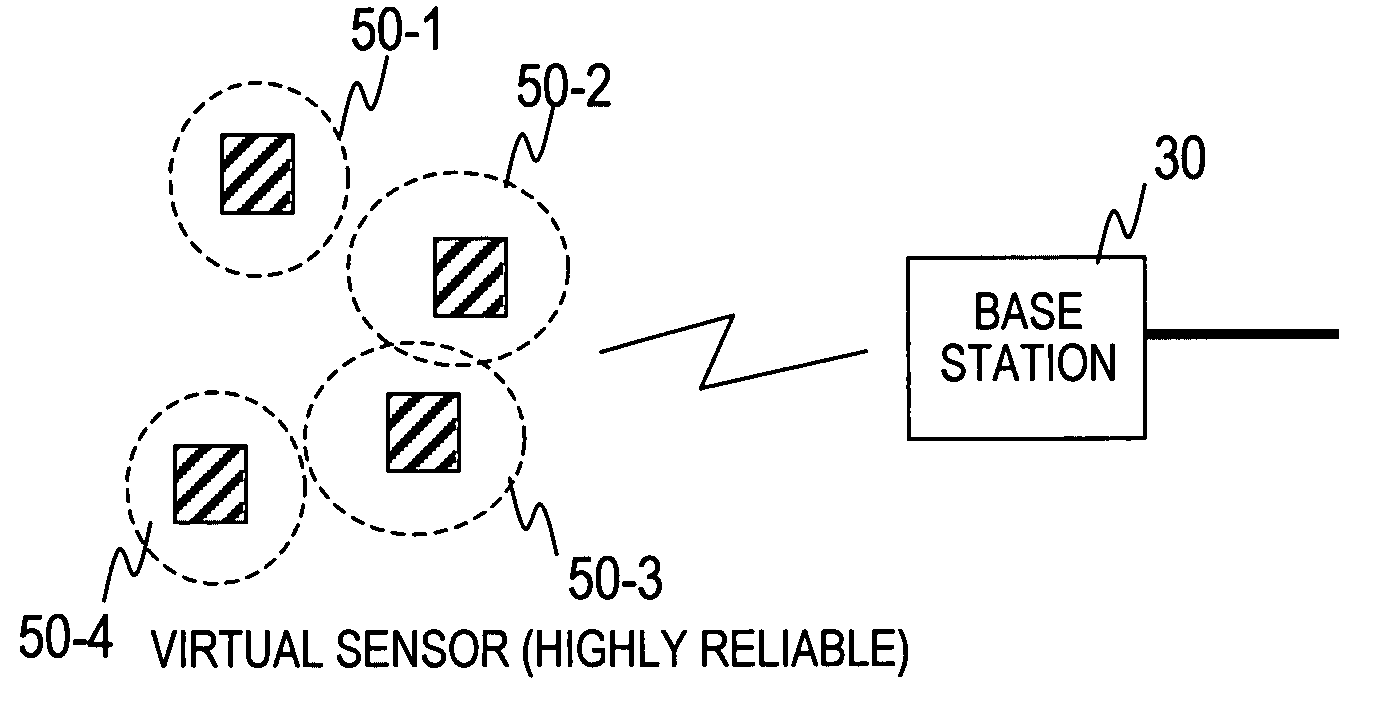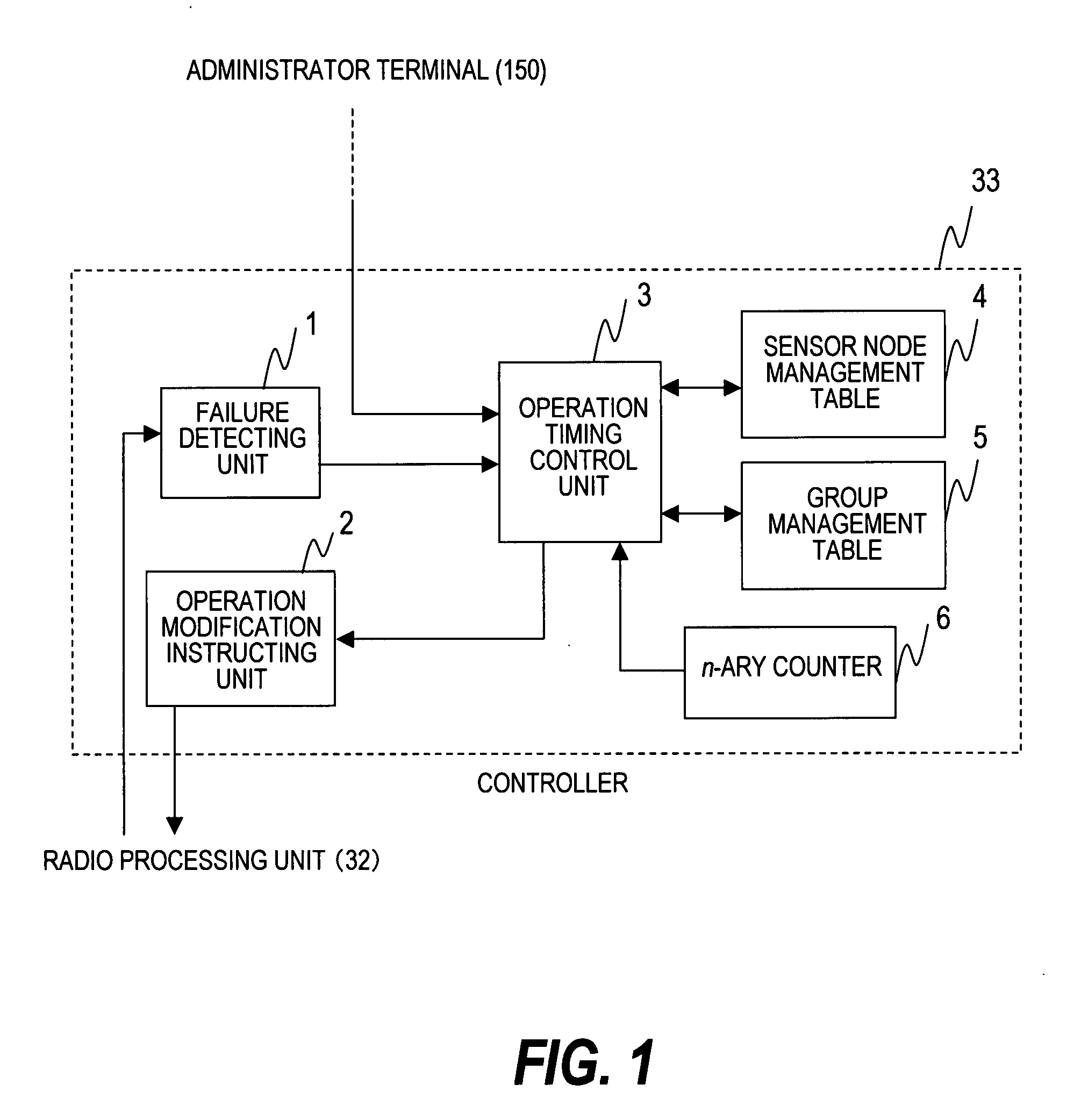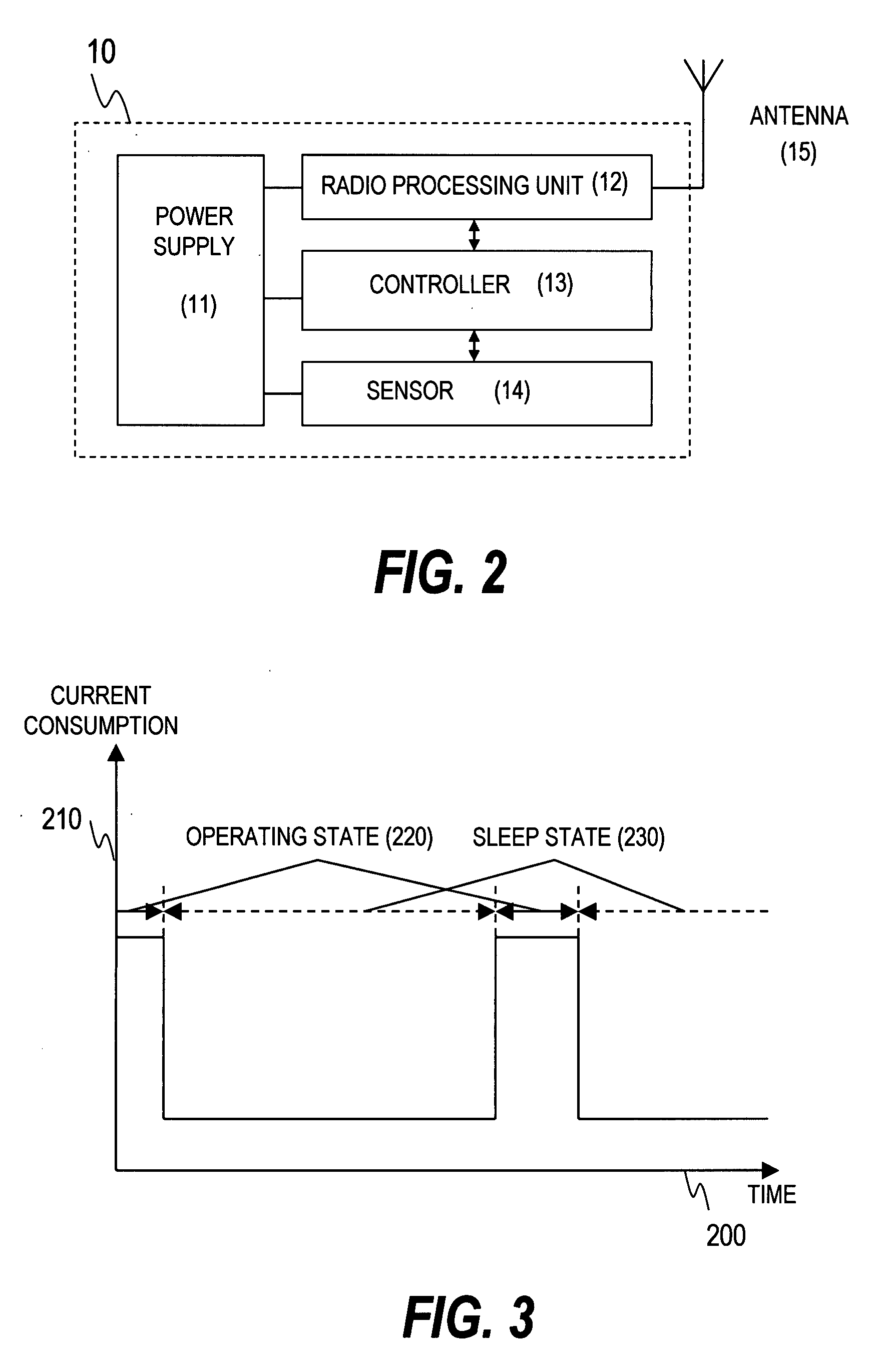Sensor Net Management Method
a technology of sensor nets and management methods, applied in adaptive control, process and machine control, instruments, etc., can solve the problems of reducing the number of operating sensors, reducing the power of operation, and lowering the information precision
- Summary
- Abstract
- Description
- Claims
- Application Information
AI Technical Summary
Benefits of technology
Problems solved by technology
Method used
Image
Examples
Embodiment Construction
[0043]A description is given of a sensor network management system according to an embodiment of this invention.
[0044]FIG. 5 shows an entire configuration of a sensor network system to which the sensor network management system of this invention is applied. Sensing information collected through a sensor network which includes multiple compact radio sensor nodes 10 are accumulated in base stations 30. The accumulated information is inputted to a server 20 via an existing network 110, for example, via a public network such as the Internet, or a private network. The server performs activation of an action corresponding to a change in sensing data, sensing data processing, sensing data accumulation processing, and the like. The function of the server 20 can be partially performed in the base stations 30 as well. An administrator can make settings for the server 20, the base stations 30, and the sensor nodes 10 and monitor them, via the network by using an administrator terminal 150.
[004...
PUM
 Login to View More
Login to View More Abstract
Description
Claims
Application Information
 Login to View More
Login to View More - R&D
- Intellectual Property
- Life Sciences
- Materials
- Tech Scout
- Unparalleled Data Quality
- Higher Quality Content
- 60% Fewer Hallucinations
Browse by: Latest US Patents, China's latest patents, Technical Efficacy Thesaurus, Application Domain, Technology Topic, Popular Technical Reports.
© 2025 PatSnap. All rights reserved.Legal|Privacy policy|Modern Slavery Act Transparency Statement|Sitemap|About US| Contact US: help@patsnap.com



